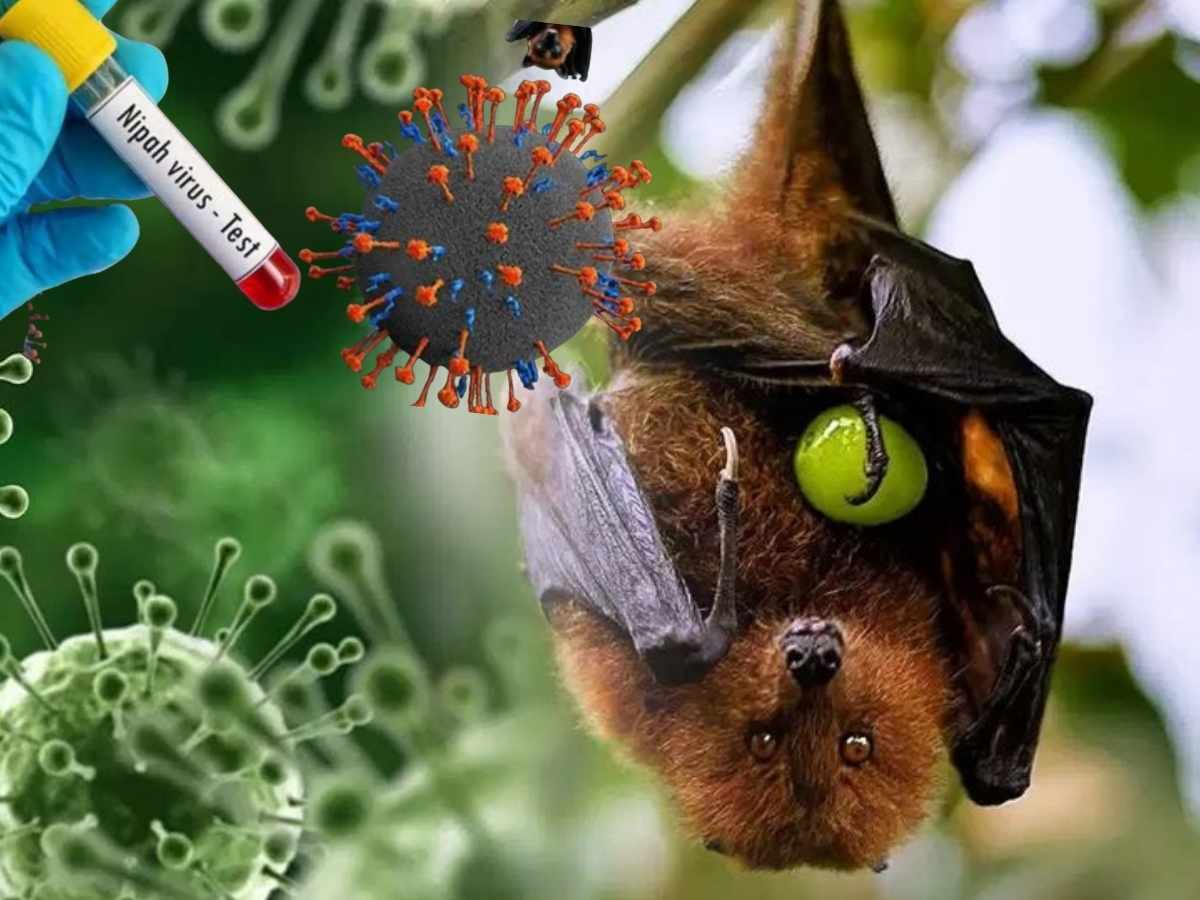Nipah Virus: Kerala is on edge once again after a 52-year-old man in Palakkad district tested positive for Nipah virus on July 12, 2025. This marks the tenth Nipah virus spillover in the state since 2018 and has put authorities on high alert. With four cases and two deaths reported this year alone all within a 50km radius along the Palakkad-Malappuram border the situation has become increasingly alarming.
Currently, 675 individuals are under surveillance across five districts as the state ramps up its containment measures.
What Is the Nipah Virus and How Dangerous Is It?
Nipah virus (NiV) is a highly infectious zoonotic pathogen, known for its high fatality rate ranging from 40% to 75% in infected humans. It belongs to the henipavirus genus and is closely related to Hendra virus, found in Australia. Fruit bats from the Pteropodidae family act as natural reservoirs for NiV, carrying the virus without showing symptoms.
Transmission to humans can occur either directly or through intermediate hosts such as pigs or horses.
Symptoms: From Seizures to Fatal Encephalitis
According to the World Health Organization (WHO), Nipah virus symptoms vary from no symptoms to acute respiratory infections, seizures, and even fatal brain inflammation (encephalitis). Patients may suffer from Acute Encephalitis Syndrome (AES) or Acute Respiratory Distress Syndrome (ARDS), with symptoms such as confusion, loss of consciousness, and severe breathing issues. The virus incubates over 4 to 14 days.
Past Outbreaks: A Global and Indian Timeline
Nipah virus was first detected in 1998 in Malaysia, where over 100 deaths occurred among pig farmers. Bangladesh has seen nearly annual outbreaks since 2001 due to bat-contaminated date palm sap. India has previously reported outbreaks in West Bengal (2001 and 2007) and in Kerala (since 2018), where the virus killed 17 people in its first outbreak.
Why Are Nipah Cases Rising in Kerala?
According to Al Jazeera, Dr. Thekkumkara Surendran Anish, Kerala’s nodal officer for Nipah, said the rise in cases may be due to improved surveillance. While the last six infections were single spillover events without human-to-human transmission, the fact that all four 2025 cases occurred within a narrow area and timeframe suggests a high viral presence in the local bat population.
Unclear Transmission Route: Could Nipah Be Airborne?
Unlike Bangladesh, where a clear transmission path exists via fruit sap, Kerala’s spillover mechanism remains uncertain. “It seems highly sporadic,” said Anish. Infected bats or contaminated fruits might be responsible, though tests on bat-bitten fruits have come back negative.
A new paper by the Indian Council of Medical Research proposes the possibility of airborne transmission. As Dr. Thekkekara Jacob John told Al Jazeera, “Microbes like in tuberculosis can float and infect people far from the source. This could explain Kerala’s recurrent, isolated cases.”
Kerala’s Strategy: Testing, Surveillance, and Early Treatment
Kerala’s success in limiting spread is attributed to robust surveillance, contact tracing, and immediate treatment. The state has registered only 37 cases across 10 spillover events, thanks to its prompt health response.
When a case is detected, primary contacts are quarantined and treated early with antivirals like Ribavirin or Remdesivir. The state also uses “syndromic surveillance,” testing anyone with AES or ARDS for NiV.
Four labs in Kerala are now equipped for RT-PCR testing of the Nipah virus, ensuring faster diagnostics.
No Cure Yet, But Vaccine Trials Offer Hope
There’s currently no drug that specifically cures NiV. However, general antivirals like Ribavirin and Remdesivir have shown some success. The WHO has classified Nipah as a priority disease under its global R&D Blueprint.
A vaccine developed by the University of Oxford began human trials in January and recently received support from the European Medicines Agency’s PRIME program. Monoclonal antibodies are also being tested as a preventive method in high-risk contacts.
Fighting Zoonotic Spillovers: The “One Health” Model
Experts emphasize that Nipah is a case study for adopting the “One Health” approach, which integrates human, animal, and environmental health.
Dr. Anish told Al Jazeera, “To stop diseases like Nipah, we must monitor and manage how humans interact with animals and nature.” Disrupting wildlife habitats, climate change, and growing urban expansion are increasing human-animal contact and triggering more zoonotic infections.
ALSO READ: Ivermectin Cuts Malaria Transmission By 26%: Largest Study Offers New Hope






